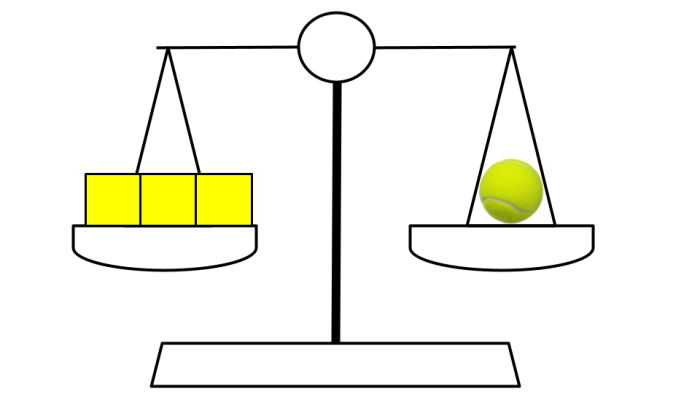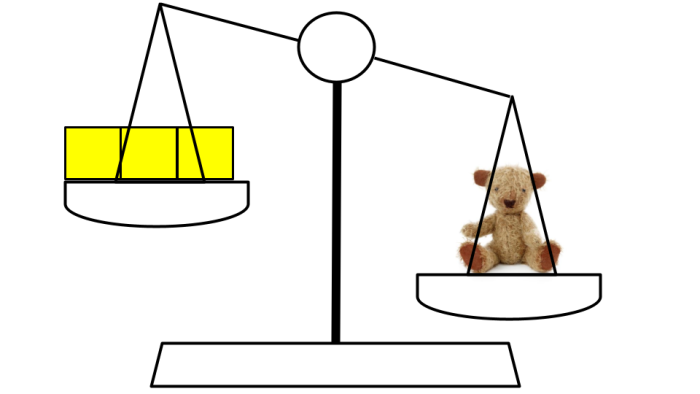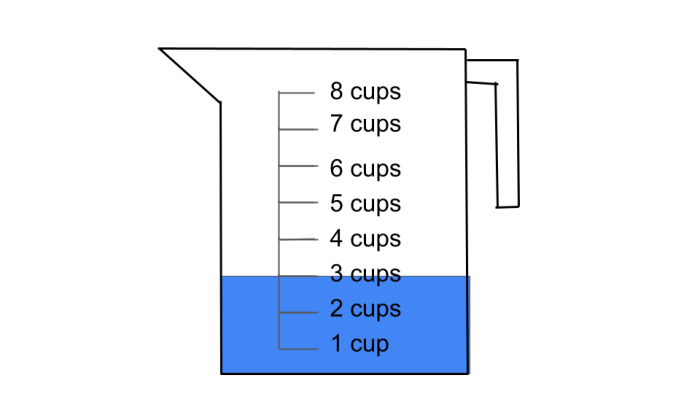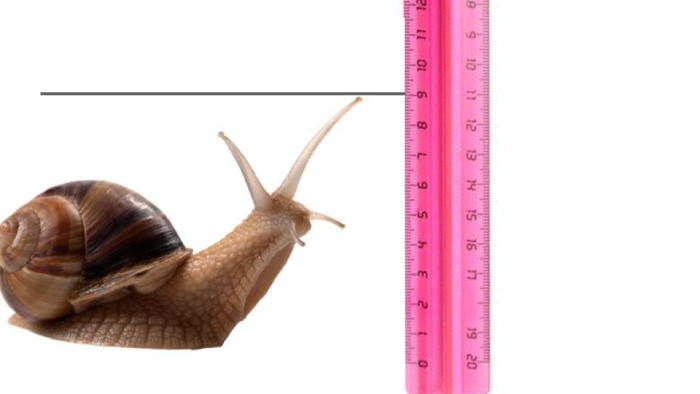In this activity, we will be measuring and recording a mixture of weight, height, capacity, length, and time.
Let's have a recap on each of these.
Weight
When the balancing scales have an equal weight, they are the same level.

When one object is heavier than another, the scales will go down on the side where the heavier object is (the teddy bear)

The blocks are lighter than the teddy as they are higher up, so the lighter object will be the higher one.
Capacity
This is to measure an amount of liquid.
The jug below has an amount of water in it.
If we look at the scale, we can see how many cups have been poured into the jug.
Where the water line ends is the amount in the jug.

This jug is measuring out 3 cups.
Length
We use a ruler to measure out a length and it is measured in centimetres which is written cm.
.png)
Here, this worm has been measured against a ruler. We follow from where the worm's head ends down to the ruler.
The worm measures 17 cm.
Height
This is the same as measuring the length, except it means we are measuring how tall something is.
So, we need to turn our ruler.
We need to go to the highest point of the object and follow across to the top of the ruler.

Here, the height of this snail is 9 cm.
Time
Finally, we have time.
We measure time in seconds, minutes, and hours.
There are 60 seconds in a minute.
There are 60 minutes in an hour.
We measure fast things in seconds. If you count to 60 at a slow, steady pace (but not too slowly) that is how fast seconds are.
We would measure a short, quick, running race in seconds.
Minutes take a little longer. We would measure lots of things in minutes - TV programs would be timed in minutes. Some are 10 minutes long and some are 30 minutes long.
An hour is 60 minutes, so we measure longer things in hours, such as a journey on a plane or a film at the cinema.

Ok, shall we have a go at these questions now?







